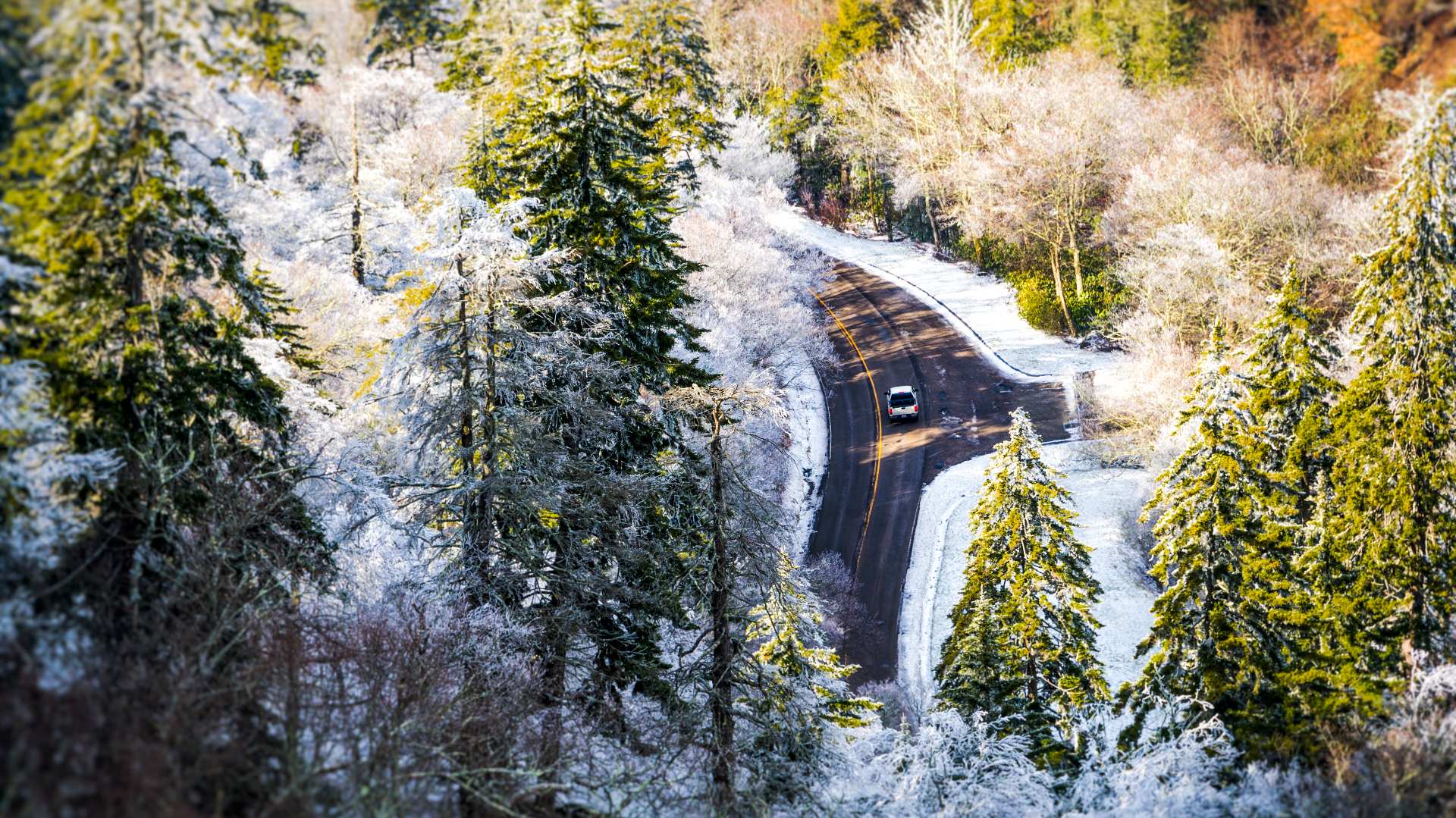Pack a bag, gas up the car and hit the asphalt. The great American road trip is back, and there’s no better way to explore the nation than by driving through our national parks. While summer road trips get all the glory, winter ones mean fewer crowds and virtually no traffic — even in the most popular parks.
Whether you’re seeking out snow or escaping the cold, follow these five national park road trip itineraries for endless winter thrills and chills. And as always, check for travel restrictions and closures before planning your drive.
Great Smoky Mountains National Park, North Carolina and Tennessee
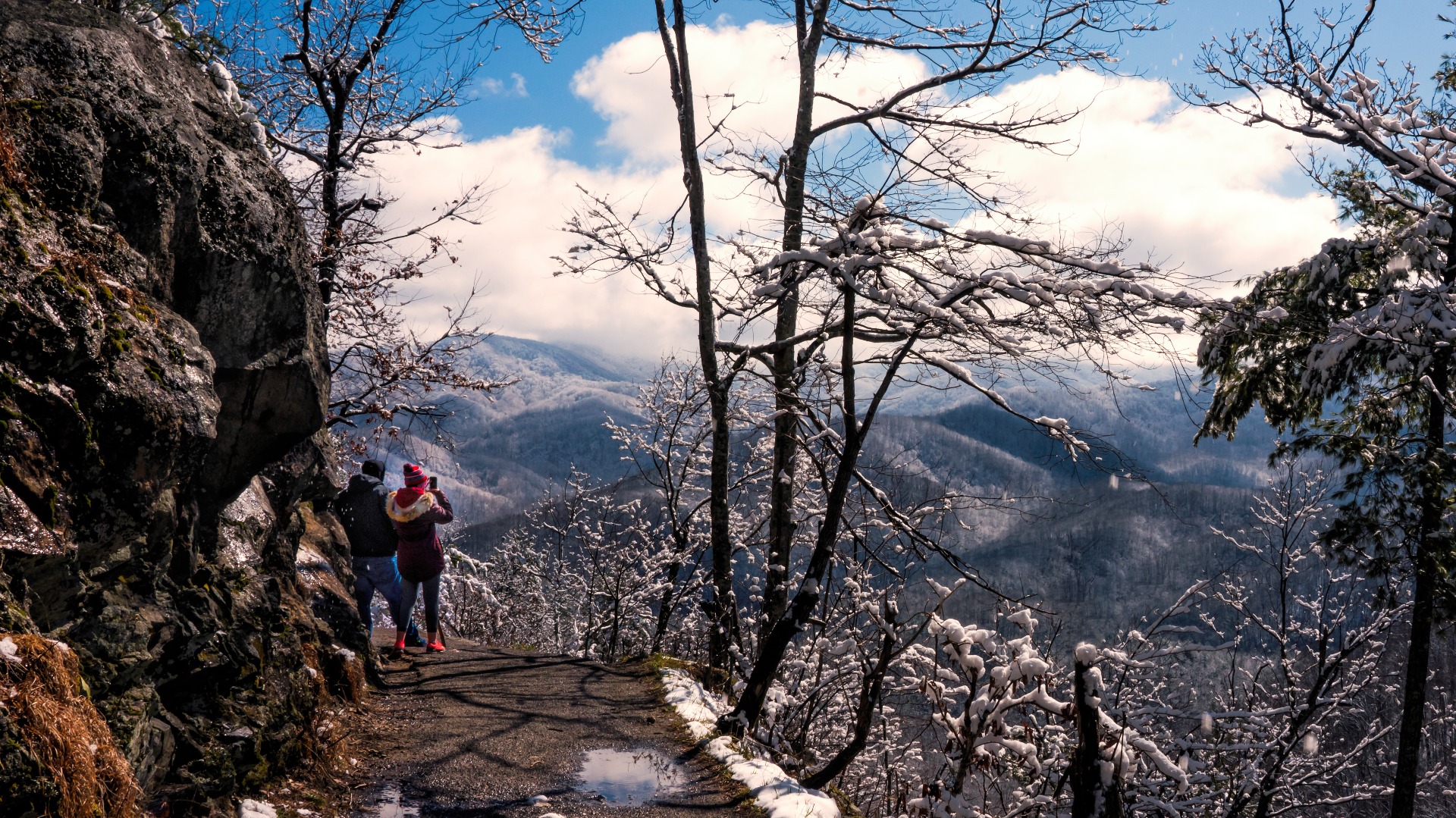
America’s most visited park grows quiet in winter, with frequent snow dustings and frozen waterfalls transforming Great Smoky Mountains National Park. With bears (and crowds) in hibernation you’ll have popular hiking trails, like the trail to Grotto Falls and the Appalachian Trail, practically to yourself. While main roads should be clear of snow, some secondary roads will be impassible.
Beginning your Great Smoky road trip in charming Gatlinburg, Tennessee, drive the parkway to one-way Roaring Fork Motor Nature Trail’s mountain streams, old-growth forests and historic log cabins.
Continue past frozen waterfalls and frosted peaks to Cades Cove, the most popular Smokies stop. Bundle up to hike Rainbow Falls, or walk the valley to see preserved homes, churches and barns built by early settlers.
Wrap up your trip at The Incredible Christmas Place — a 30-year-old, year-round holiday institution brimming with decor and customized ornaments.
Zion National Park, Utah
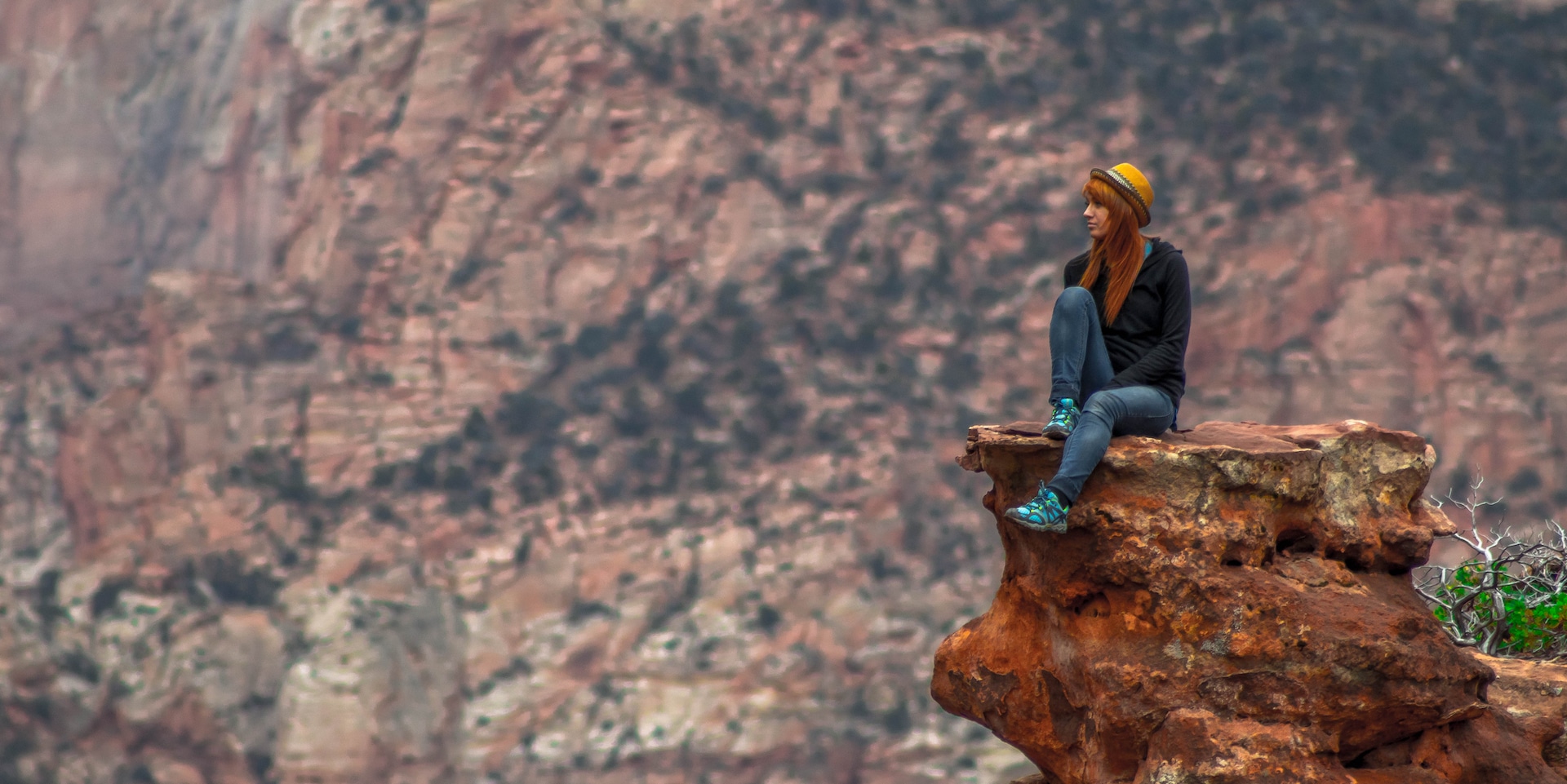
Zion is one of the country’s most visited national parks, but you wouldn’t know it in winter, when solitude reigns supreme. While snow is rare thanks to the relatively mild climate, occasional dustings make Zion’s sandstone towers and spires sparkle.
Another perk of the season: skipping the shuttle and driving your car along Zion Canyon Scenic Drive. [Shuttle runs March through November. No shuttle (so driving is ok) December through February.]
To reach the park, take Interstate 15 to Zion Park Scenic Byway (Utah state Rout 9) and follow it to Springdale. Pop by FeelLove Coffee to warm up with a cuppa, and then continue toward Zion Canyon. This sacred stretch of road is home to the Great White Throne, a rock monolith rising 2,400 feet from the valley floor, and the Three Patriarchs, a trio of towering sandstone peaks.
Angel’s Landing is the most popular hike, but its sheer drops are best avoided in iffy winter weather. Instead, take on the paved Pa’rus Trail or Lower Emerald Pool Trail this time of year.
Once you’ve explored the canyon, follow the byway through an engineering marvel — the park’s 100-year-old, mile-long tunnel. Stop just past it at Canyon Overlook Trail, a quick, 1-mile jaunt up sandstone steps, for some of the park’s best red rock vistas.
Drive on past Checkerboard Mesa, a Navajo sandstone outcropping with gridlike erosion, before exiting the park at Zion’s east end. Book a guided East Zion Adventures tour to rappel into a deep slot canyon or horseback ride along vermillion canyon cliffs.
Continue on to U.S. 89 — the gateway to Bryce Canyon National Park and Grand Staircase National Monument.
Death Valley National Park, California and Nevada
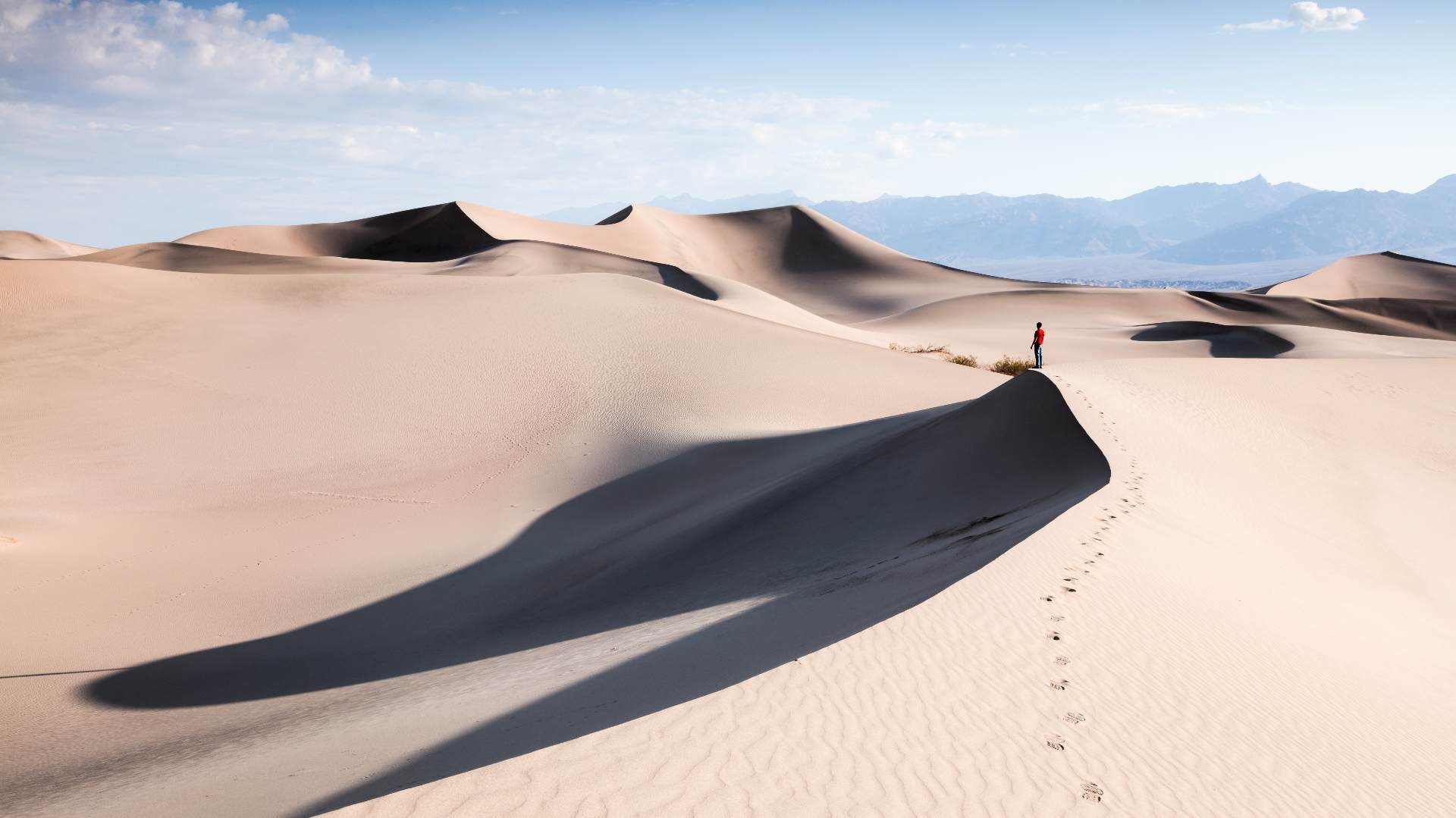
With endless golden sand dunes, vast salt flats and deep desert basins, Death Valley’s diverse landscapes inspire and astound. It’s pretty much hell on earth in summer months, and it recorded the planet’s hottest-ever temperature (130 degrees F) in 2020. Save yourself the heat stroke and visit this stark desert landscape in cool winter weather when wildflowers bloom.
Starting in Las Vegas, follow Nevada state Route 160 for 2.5 hours to reach the park. Since the journey’s short, stop along the way at the babbling springs of Spring Mountain Ranch State Park or the family-owned wineries of small-town Pahrump.
Begin with a badlands panorama at Zabriskie Point before continuing on state Route 190 to Furnace Creek. Grab a map at the visitor’s center; then sign up for free ranger-led geology tours of the canyons and basins.
Take advantage of the not-deadly winter temperatures and walk Badwater Basin salt flat— the lowest and often hottest point in North America at 282 feet below sea level.
Make a last stop at the Devil’s Golf Course, a sea of sharp salt slabs so named because only Satan could putt on its rough surface. Once you’ve explored the valley, return to Vegas on state Route 160 or take U.S. 95 south.
Everglades National Park, Florida
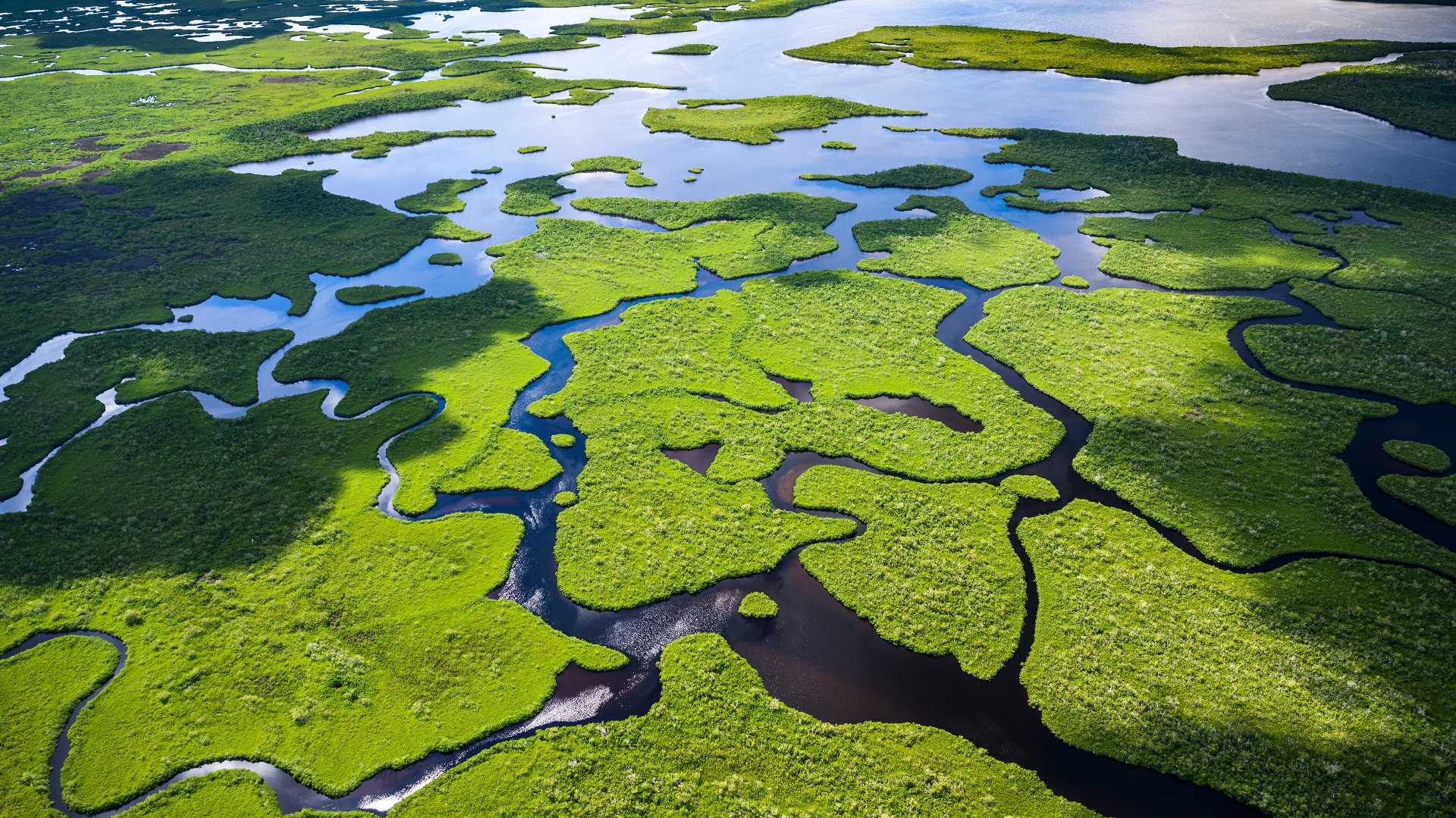
While most national parks empty out in winter, it’s actually the busiest time of year in Everglades National Park thanks to mild temperatures, low humidity and far fewer of the giant mosquitos that bring a sting to summer visits.
Encompassing 1.5 million acres on Florida’s southern tip, the Everglades’ subtropical wilderness protects sawgrass marshes, coastal mangrove trees and wildlife ranging from alligators to elusive Florida panthers. Winter is the prime season to see many animals — if you know where to look.
Beginning your Everglades road trip in Miami, drive 45 minutes west on the Tamiami Trail (U.S. Highway 41) to Shark Valley Visitor Center. Pre-book an open-air tram tour and ride the 15-mile loop, or rent bikes and pedal to spot baby gators and endangered birds.
End with a 360-degree panorama of this marshy wilderness from the 55-foot-tall Shark Valley Observation Tower.
Continue your road trip by a little over an hour south to the park’s Royal Palm Visitor Center and walk Anhinga Trail (.8 miles round trip) for practically guaranteed gator and egret sightings in the freshwater sawgrass marshlands.
Grand Canyon National Park, Arizona
One of the modern Wonders of the World, the Grand Canyon brings in more than five million visitors a year — but just 10 percent come during winter. Experience uninterrupted snowy vistas at the South Rim’s Mather Point, or bring hiking poles and sturdy shoes for a warmer walk along Bright Angel Trail.
Thaw out with hot chocolate in Grand Canyon Village, or rent a bike when the weather’s mild. West Rim Drive opens to personal vehicles in winter, and it’s worth the 8-mile drive to see Hermits Rest Lookout. For heart-pounding thrills, head to the West Rim Skywalk, a horseshoe-shaped glass bridge extending 70 feet over the canyon rim.
